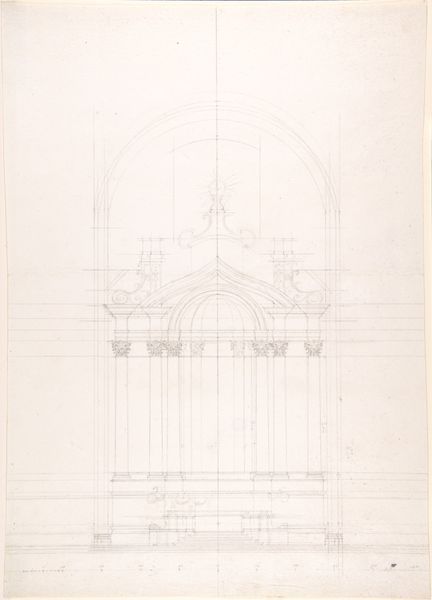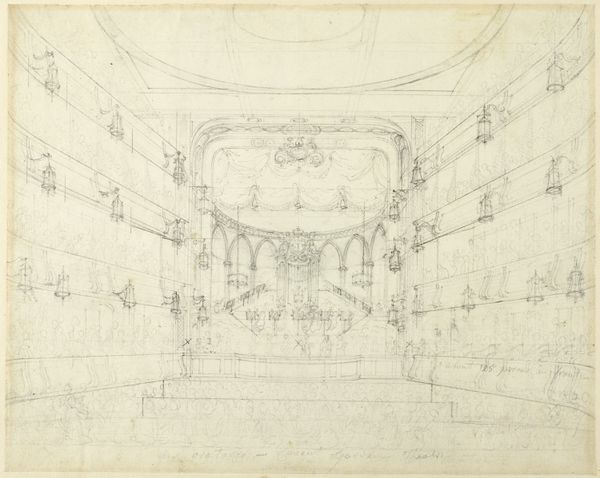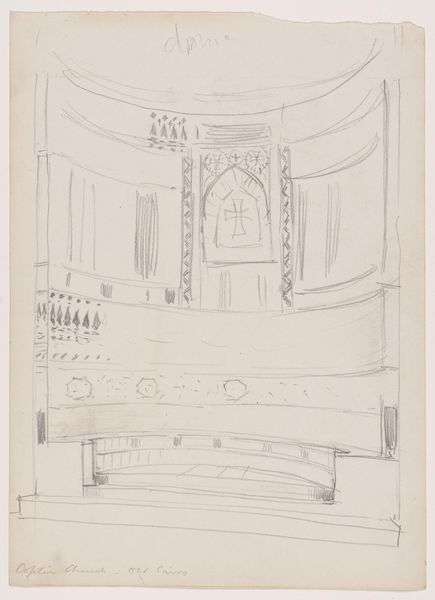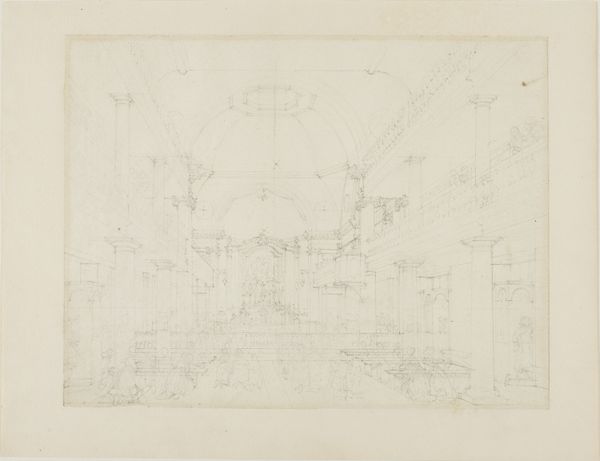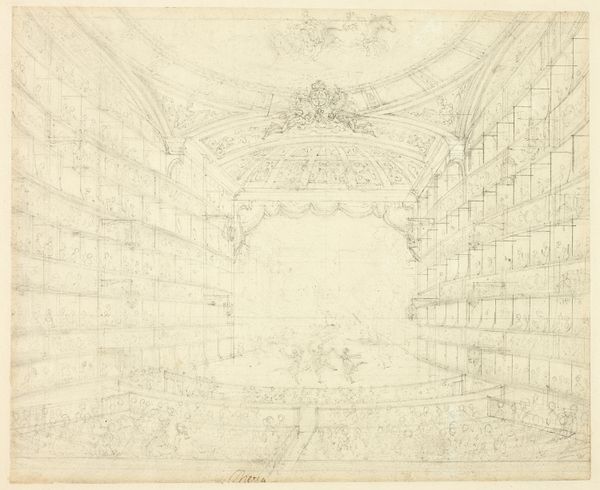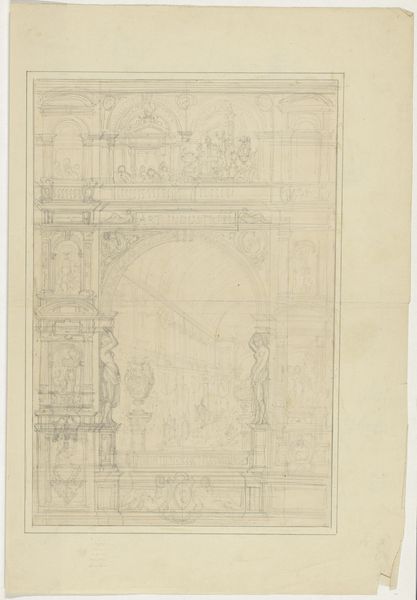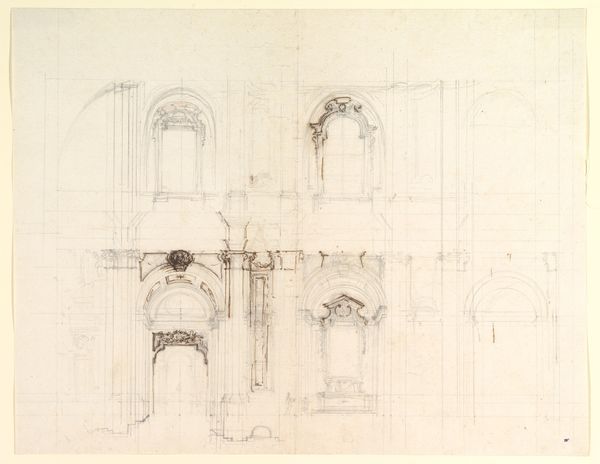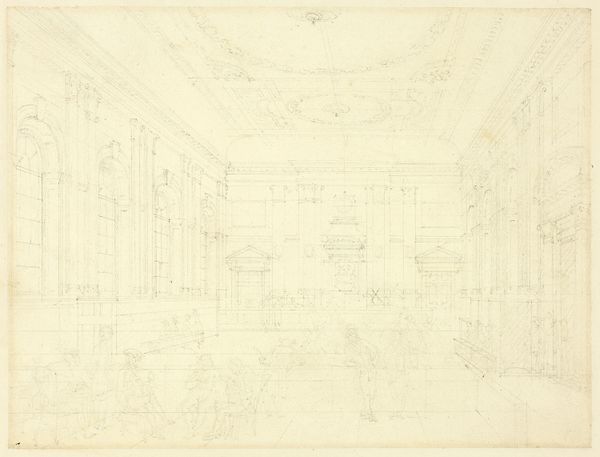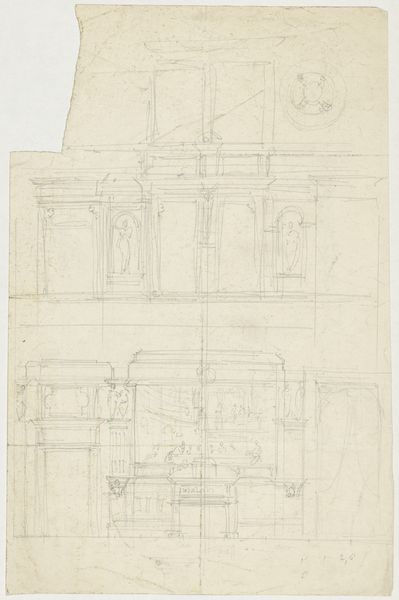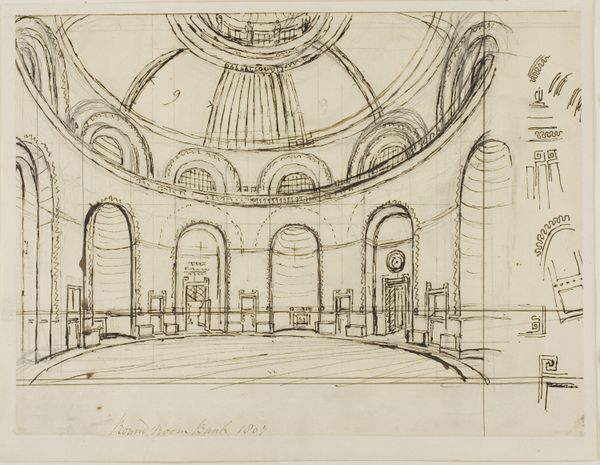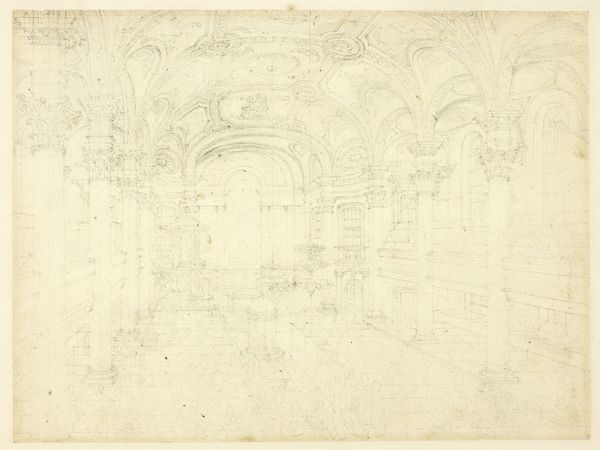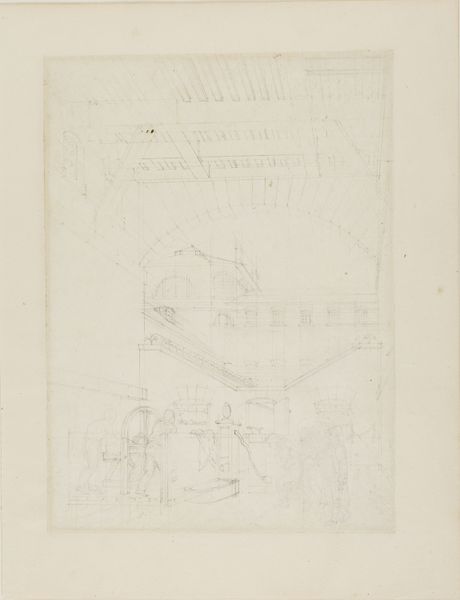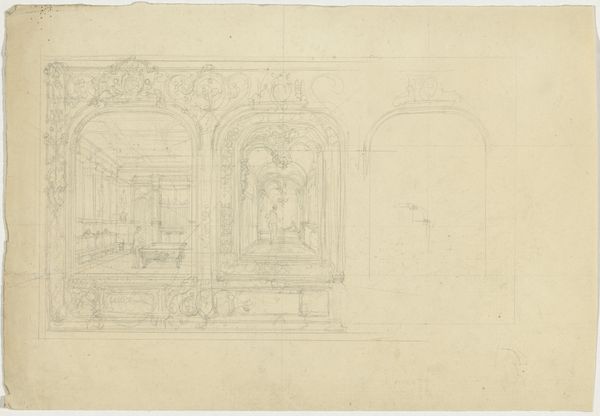
Study for Session House, Clerkenwell, from Microcosm of London c. 1809
0:00
0:00
drawing, print, paper, graphite, architecture
#
drawing
# print
#
etching
#
paper
#
11_renaissance
#
geometric
#
graphite
#
cityscape
#
architecture
Dimensions: 257 × 196 mm
Copyright: Public Domain
Editor: Here we have Augustus Charles Pugin's "Study for Session House, Clerkenwell, from Microcosm of London," created around 1809. It's a graphite, etching and graphite on paper and it depicts an interior view of a courthouse. I'm struck by how skeletal the architecture feels, like we're seeing the bare bones of power. What can you tell me about its context? Curator: That's a perceptive observation. Pugin was part of a larger movement of architectural draftsmen who meticulously documented the changing urban landscape of London. These weren't just objective records; they were deeply intertwined with the socio-political fabric of the time. Consider what it meant to represent a session house so precisely, capturing both its imposing structure and the people within. What sort of a public function would this house have? Editor: Well, from the title, it would be used as a court house. So there are judges, the accused and general seating for onlookers. It makes sense that he included people inside because of that. Curator: Exactly. Pugin's inclusion of human figures brings up questions of accessibility and justice. The building's design and visual presence reinforced hierarchical power structures and was a space for legal administration that directly impacted Londoners’ lives. The session house as a symbol of justice—was it truly open to all? Did it administer fair outcomes? Editor: So, this drawing offers not only a glimpse into London's architectural evolution but also encourages a critical examination of power and its physical manifestations? Curator: Precisely. Museums can shape our understanding of architecture, transforming buildings into cultural symbols that often reflect broader socio-political concerns. And we can look critically into their own values. Does exhibiting this drawing reinforce or challenge its original intentions? Editor: I hadn't considered that - how even displaying architectural plans has political consequences. Thanks! Curator: Of course. Considering those consequences shapes our viewing.
Comments
No comments
Be the first to comment and join the conversation on the ultimate creative platform.
